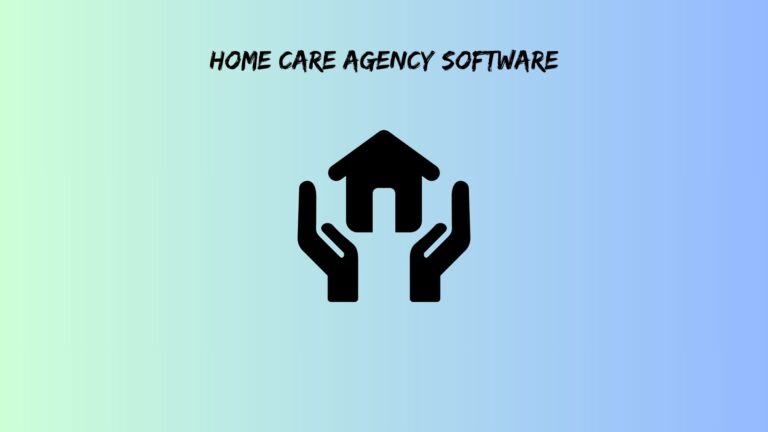Top Warehouse Management Software Systems to Streamline Inventory & Fulfillment
Poor inventory management costs businesses $1.1 trillion globally each year. Meanwhile, 43% of small companies still track inventory manually or don’t track it at all. Your warehouse chaos isn’t just costing money, it’s killing customer relationships and crushing your sanity.
The solution? Finding warehouse management software that works for your specific operation, not just the biggest marketing budget.
The Hidden Costs of Warehouse Chaos in 2025
Manual warehouse processes create expensive problems that compound daily. Workers waste 30% of their time hunting for misplaced items instead of fulfilling orders efficiently.
Inventory shrinkage averages 1.4% of annual revenue, which translates to $140,000 lost for every $10 million in sales. That’s not accounting for the ripple effects of stockouts and customer defections.
Consider this scenario: A growing e-commerce brand lost 87% of customers after shipping delays caused by warehouse disorganization. Their manual tracking system couldn’t handle Black Friday volume, leading to oversold items and furious customers.
Customer expectations have shifted dramatically. Same-day delivery isn’t a luxury anymore, it’s standard service. Businesses using outdated warehouse management systems simply can’t compete with companies leveraging modern technology.
Compliance penalties add another layer of expense. FDA regulations, safety audits, and inventory accountability requirements become nightmares without proper systems. One failed audit can cost more than several years of software subscriptions.
The tipping point arrives when spreadsheet management becomes impossible. Growth should feel exciting, not terrifying, because your systems can’t handle increased volume.
Also read: best free legal billing software
Essential Criteria for Choosing the Best Warehouse Management Software Systems
Scalability That Matters
Order volume capacity needs to exceed your current needs by at least 300%. Growing businesses often underestimate expansion speed, leading to expensive software migrations within two years.
Multi-location support becomes crucial as operations expand. However, many companies choose systems based on single-location needs, then discover licensing costs skyrocket with additional warehouses.
Integration flexibility determines long-term success more than flashy features. Your warehouse management software must connect seamlessly with existing accounting, e-commerce, and CRM platforms without custom development expenses.
User license structures hide significant costs. Per-user pricing can multiply expenses rapidly as teams grow. Therefore, carefully evaluate pricing models against projected staffing needs.
Operational Must-Haves
Real-time inventory visibility across all sales channels prevents overselling disasters. Customers expect accurate stock levels whether shopping online, in-store, or through marketplaces.
Automated reorder points eliminate guesswork from purchasing decisions. Smart systems analyze sales velocity, seasonal trends, and lead times to optimize inventory levels automatically.
Pick path optimization reduces labor costs significantly. Warehouse workers following optimized routes complete orders 40% faster than random picking patterns.
Return processing automation handles the inevitable product returns efficiently. E-commerce returns average 20-30% of sales, making streamlined reverse logistics essential for profitability.
Decision-Making Framework
Total cost of ownership calculations must include implementation, training, and ongoing support expenses. Software sticker prices rarely reflect actual investment requirements.
Implementation timelines vary dramatically between simple warehouse management software and complex enterprise solutions. Business disruption during transitions can cost more than the software itself.
Support quality directly impacts daily operations. Offshore support teams often lack warehouse expertise, leading to frustrating troubleshooting experiences during critical periods.
Data migration complexity increases with business age and system variety. Legacy data cleanup can require months of preparation before successful software transitions.
Top Warehouse Management Software Systems: The Real Story
1. ShipHero: The E-commerce Fulfillment Machine
ShipHero dominates high-volume e-commerce fulfillment with laser-focused functionality. Built specifically for online retailers processing hundreds of daily orders, it excels where generic systems struggle.
Ideal users: E-commerce brands shipping 100+ orders daily with complex fulfillment requirements.
Predictive analytics help prevent stockouts by analyzing sales patterns, seasonal trends, and promotional impacts. Automated pick routing reduces walking time by up to 40%, directly improving labor efficiency.
Real-time inventory synchronization across multiple sales channels eliminates overselling headaches. Integration with major e-commerce platforms happens seamlessly, though B2B wholesalers might find features unnecessary.
Pricing starts at $1,250 monthly for basic warehouse operations, making it expensive for smaller operations. However, users consistently report significant pick time reductions and improved order accuracy.
The catch: Implementation complexity can overwhelm teams without technical expertise. Additionally, manufacturing businesses find limited production-specific features compared to specialized alternatives.
2. ShipBob: The Flexible Fulfillment Solution
ShipBob offers unique flexibility by combining warehouse management software with optional third-party logistics services. This hybrid approach suits growing brands uncertain about self-fulfillment versus outsourcing decisions.
Ideal users: Growing companies wanting options between self-fulfillment and professional logistics services.
Split inventory capabilities allow stock distribution across multiple fulfillment centers, reducing shipping costs and delivery times. Predictive restocking analyzes sales velocity to optimize inventory placement automatically.
Software-only plans start at $40 monthly, making it accessible for small warehouse management software needs. Full-service pricing varies based on storage and fulfillment volumes.
Users report an average of 27% shipping cost reductions through strategic inventory placement. However, software-only modes lack the advanced features available in competing dedicated systems.
The reality: ShipBob works best for companies eventually planning to outsource fulfillment. Pure self-fulfillment operations might outgrow the software limitations quickly.
3. Fishbowl: The Manufacturing-Warehouse Bridge
Fishbowl specializes in connecting manufacturing operations with warehouse management, making it ideal for companies producing and distributing products simultaneously.
Ideal users: Manufacturers with complex assembly processes and multi-stage distribution requirements.
Work order management integrates production scheduling with inventory availability, preventing material shortages that halt manufacturing. Multi-location manufacturing support coordinates complex supply chains efficiently.
QuickBooks integration provides seamless accounting connections, though the interface feels outdated compared to modern alternatives. Limited e-commerce platform integrations require additional development for online sellers.
One-time licensing at $4,395 plus annual maintenance avoids monthly subscription expenses. Manufacturers report a 25% improvement in order accuracy through better production-to-fulfillment coordination.
The drawback: E-commerce businesses find limited online selling features. Pure retailers should consider platforms designed specifically for their needs.
4. Cin7 Core: The Multi-Channel Master
Cin7 Core excels at managing inventory across multiple sales channels simultaneously. Retailers selling through stores, websites, marketplaces, and wholesale channels benefit from unified inventory management.
Ideal users: Multi-channel retailers juggling complex inventory flows across various selling platforms.
Advanced demand forecasting analyzes historical data, seasonal patterns, and promotional impacts to optimize purchasing decisions. Automated purchasing workflows eliminate manual reorder processes while maintaining optimal stock levels.
Comprehensive reporting provides insights into channel performance, profitability analysis, and inventory turnover rates. However, setup complexity can overwhelm teams without dedicated IT support.
Pricing starts at $325 monthly for basic plans, scaling with feature requirements and transaction volumes. Users typically experience a 30% reduction in stockouts across all sales channels.
The challenge: Simple operations might find the system overwhelming. Single-channel businesses should consider simpler warehouse management software alternatives.
5. Extensiv: The 3PL Powerhouse
Extensiv (formerly 3PL Central) targets third-party logistics providers and large-scale distribution operations with specialized multi-client capabilities.
Ideal users: Third-party logistics companies managing inventory for multiple clients simultaneously.
Multi-client management allows separate inventory tracking, billing, and reporting for each customer within a single system. Billing automation streamlines complex 3PL invoicing processes significantly.
EDI integration connects with major retailers and suppliers automatically, reducing manual data entry and improving accuracy. Custom pricing reflects the complexity and volume requirements of enterprise operations.
3PL operators report 50% faster billing cycles and improved client satisfaction through better visibility and reporting capabilities.
The limitation: Single-client warehouses pay for unnecessary multi-client features. Direct-to-consumer businesses should explore more suitable alternatives.
6. Zoho Inventory: The Small Business Champion
Zoho Inventory provides simple warehouse management software perfect for growing businesses seeking affordable, user-friendly solutions without enterprise complexity.
Ideal users: Small to medium businesses needing straightforward inventory management with room for growth.
Easy setup and intuitive interfaces minimize training requirements, allowing teams to become productive quickly. Mobile applications enable warehouse management from anywhere, improving flexibility.
Integration with the broader Zoho ecosystem provides accounting, CRM, and e-commerce connections at competitive prices. Basic warehouse features start at $40 monthly, making it accessible for budget-conscious operations.
Implementation typically completes 60% faster than enterprise alternatives. However, rapid growth can quickly exceed system capabilities, requiring eventual upgrades to more robust platforms.
The trade-off: Advanced features and customization options remain limited compared to specialized warehouse management systems.
7. InfoPlus WMS: The Customization Champion
InfoPlus WMS offers extensive customization capabilities, adapting to unique business processes rather than forcing standard workflows on operations.
Ideal users: Companies with specialized workflows requiring custom warehouse management solutions.
Custom workflow creation allows businesses to replicate existing processes digitally without changing operational procedures. Extensive API access enables deep integrations with existing software ecosystems.
Advanced reporting engines provide detailed analytics and custom dashboard creation for specific business requirements. Complex fulfillment operations achieve 99.5% order accuracy through tailored system configurations.
Pricing starts around $500 monthly but scales significantly with customization complexity. Implementation requires technical expertise and longer timelines than standard solutions.
The consideration: Simple operations pay premium prices for unnecessary customization capabilities. Standardized workflows often work better with plug-and-play alternatives.
Also read: top 10 free accounting software for small business
Implementation Reality: What Nobody Tells You
Data migration represents the biggest implementation challenge for most businesses. Legacy systems often contain inconsistent, incomplete, or corrupted data requiring extensive cleanup before successful transitions.
Staff resistance creates unexpected obstacles during software rollouts. Warehouse workers comfortable with existing processes often resist new technology, requiring comprehensive training and change management strategies.
Integration failures occur more frequently than vendors admit. Existing software compatibility issues can derail implementations, forcing expensive custom development or system replacements.
Hidden costs emerge post-purchase regularly. Additional user licenses, training expenses, customization fees, and support charges can double initial budget estimates.
Timeline expectations rarely match reality. Software vendors quote optimistic implementation schedules, but most businesses experience delays due to data preparation, integration complexity, and staff training requirements.
The solution: Start with pilot programs testing core functionality before full commitments. Gradual rollouts reduce risk and allow teams to adapt incrementally rather than experiencing overwhelming change.
ROI Calculator: Beyond Feature Lists
Labor cost reduction provides the most immediate return on warehouse management software investments. Eliminating 30% of wasted searching time directly improves productivity and reduces staffing requirements.
Inventory carrying cost improvements come from better demand forecasting and automated reorder optimization. Reducing excess inventory by 20% frees significant cash flow for growth investments.
Customer satisfaction improvements through faster, more accurate fulfillment increase lifetime value substantially. Preventing customer defections pays for software costs multiple times over.
Compliance cost avoidance becomes increasingly valuable as regulations tighten across industries. Automated record-keeping and audit trails prevent expensive penalties and failed inspections.
Case study: One mid-size distributor saved $2.3 million annually after implementing warehouse management software. Labor efficiency improvements, inventory optimization, and reduced errors created a measurable bottom-line impact within six months.
Making the Strategic Choice
The “pilot” approach works best for most businesses. Testing core functionality with a subset of inventory or a specific warehouse area reduces risk while proving system value.
Negotiation strategies can significantly improve pricing and terms. Software vendors often provide discounts for longer commitments, multiple licenses, or implementation timing flexibility.
Implementation timeline planning should account for business seasonality. Avoiding system changes during peak periods prevents disruption when revenues matter most.
Success metrics should focus on measurable outcomes rather than vendor promises. Track order accuracy, pick times, inventory turns, and customer satisfaction rather than feature adoption rates.
Hybrid solutions sometimes provide better value than single-platform approaches. Combining specialized tools for specific functions can cost less than comprehensive enterprise platforms.
Also read: online appointment and scheduling software
Future-Proofing Your Investment
Artificial intelligence integration continues expanding across warehouse management systems. Voice-picking technology and predictive analytics become standard features rather than premium add-ons.
Automation compatibility ensures systems can grow with robotic and conveyor technologies. Choose platforms designed to integrate with future warehouse automation investments.
Sustainability reporting requirements increase across industries. Modern warehousing software should track carbon footprints, packaging waste, and environmental impact metrics.
E-commerce evolution demands flexible, scalable warehouse management systems. Today’s successful platforms adapt quickly to changing customer expectations and selling channel requirements.
Frequently Asked Questions
Q: What’s the difference between simple warehouse management software and enterprise systems?
Simple warehouse management software focuses on core inventory tracking, basic reporting, and straightforward order fulfillment. These systems work well for small to medium businesses with standard processes and limited complexity.
Enterprise systems offer advanced features like multi-location management, complex workflow customization, extensive integrations, and sophisticated analytics. They’re designed for large operations with unique requirements and substantial transaction volumes.
The main trade-offs involve cost, complexity, and implementation time. Simple systems cost less and deploy faster, but may limit growth. Enterprise platforms provide more capabilities but require larger investments and longer implementations.
Q: How long does warehouse management software implementation typically take?
Implementation timelines vary dramatically based on system complexity, data migration requirements, and customization needs. Simple warehouse management software can be deployed in 2-4 weeks with clean data and standard processes.
Complex systems often require 3-6 months for full implementation, including data preparation, staff training, integration development, and testing phases. Custom workflows and extensive integrations can extend timelines to 12+ months.
Success factors include dedicated project management, clean historical data, stakeholder buy-in, and realistic timeline expectations. Rushing implementations often leads to problems that cost more time and money than careful planning.
Q: Can small businesses afford top warehouse management software systems?
Yes, many small businesses can afford modern warehouse management systems, though choosing the right solution requires careful evaluation. Simple warehouse management software starts around $40-100 monthly, fitting most small business budgets.
The key is matching system capabilities to actual needs rather than buying enterprise features for simple operations. Small businesses often achieve better ROI from focused, user-friendly systems than complex platforms requiring extensive training.
Consider the total cost of ownership, including implementation, training, and ongoing support. Sometimes, slightly more expensive systems with better support and easier implementation provide better value than the cheapest options requiring extensive internal resources.







